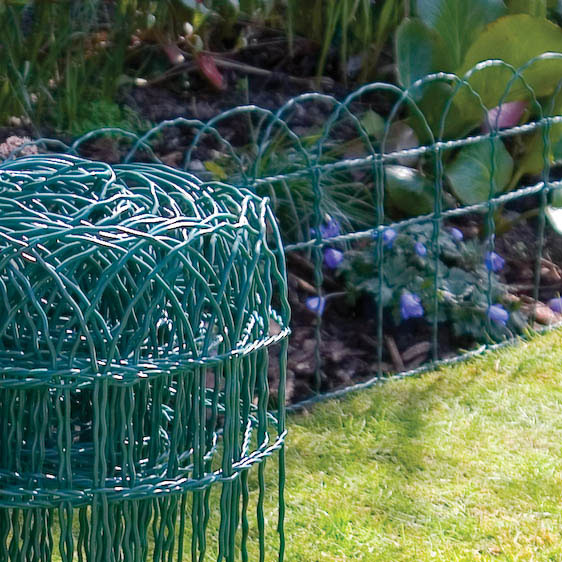When it comes to enhancing your outdoor space, few things can match the impact of decorative wire fencing. As someone who has gone down this path of beautifying my own backyard, I can attest to the wonderful transformation that such fencing can bring. This guide will walk you through everything you need to know about decorative wire fencing, including its types, benefits, installation, maintenance, and more.
What is Decorative Wire Fencing?
Decorative wire fencing combines functionality and aesthetic appeal, providing a boundary while adding a touch of elegance to your outdoor spaces. Unlike traditional fencing options, decorative wire fencing often features creative designs and patterns, making it a popular choice for gardens, yards, and public spaces.
History of Wire Fencing
Wire fencing has been used for centuries, initially designed for agricultural purposes. Over time, as landscaping and architectural styles evolved, so did the designs of wire fences. Today, decorative wire fencing is sought after for its versatility and visual interest.
Benefits of Decorative Wire Fencing
From visual appeal to practical advantages, decorative wire fencing offers numerous benefits.
Enhanced Aesthetic Appeal
One of the most significant advantages of decorative wire fencing is its ability to enhance the visual appeal of your property. It adds an artistic touch that can complement various architectural styles.
Durability and Longevity
Made from strong materials like galvanized steel or aluminum, decorative wire fencing is designed to withstand the elements, ensuring longevity with minimal maintenance.
Versatility in Design
Decorative wire fencing comes in various styles, colors, and heights, allowing homeowners to choose designs that best suit their property’s aesthetic. Whether you prefer something classic and elegant or modern and chic, there’s a decorative wire option for you.
Cost-Effectiveness
Compared to solid fencing materials like wood or brick, decorative wire fencing is often more affordable to install and maintain, making it a budget-friendly option for homeowners.
Types of Decorative Wire Fencing
Choosing the right type of decorative wire fencing is crucial for achieving the desired look and functionality.

1. Welded Wire Fencing
This type of fencing is created by welding wire intersections together, forming a sturdy mesh. It’s available in various designs, including intricate patterns and simple grids.
Pros:
- Highly durable and resistant to bending.
- Available in various styles and finishes.

Cons:
- May require more installation effort.
- Can be more expensive than other options.
2. Chain Link Fencing
Chain link fencing is made from interwoven steel wires and can be painted for added aesthetic appeal. While it is often seen as utilitarian, decorative coatings can enhance its appearance.

Pros:
- Cost-effective and easy to install.
- Available in various heights and colors.
Cons:
- Less privacy compared to other fencing types.
- Can appear less decorative without enhancements.

3. Rod Iron Fencing
Wrought or cast iron fencing adds a touch of luxury to your outdoor space. Its ornate designs can serve as a statement piece in any garden.
Pros:
- Highly attractive and decorative.
- Long-lasting and durable.

Cons:
- Can be more expensive than other options.
- Needs regular maintenance to prevent rust.
Installation of Decorative Wire Fencing
Installing decorative wire fencing can be a rewarding DIY project if you have the right tools and knowledge. Here’s a step-by-step guide:
Step 1: Planning Your Layout
Before you begin, take time to plan your fencing layout. Consider the purpose of the fence, whether it’s to delineate space, provide security, or add beauty.

Step 2: Gather Your Materials and Tools
- Decorative wire fence panels
- Concrete mix (if installing posts)
- Post anchors or posts
- Level and measuring tape
- Power drill and screws
Step 3: Install Fence Posts
Start by installing your fence posts. Use a post hole digger to create holes at the designated spots, place the posts, and secure them with concrete.

Step 4: Attach the Wire Fencing
Once the posts are set and dry, attach the decorative wire fencing according to the manufacturer’s instructions. Ensure the panels are level and securely fastened.
Step 5: Finishing Touches
After installation, you may want to add caps to your posts or paint the fence for additional protection and style.
Maintenance Tips for Decorative Wire Fencing
To keep your decorative wire fencing looking its best, regular maintenance is essential.
1. Regular Cleaning
Dust, dirt, and debris can accumulate over time. Use a soft brush or cloth to wipe down any surfaces regularly.
2. Check for Rust and Damage
Inspect your fencing for signs of rust or damage. If you notice any issues, address them promptly to prevent further deterioration.
3. Repaint or Refinish as Needed
If your decorative wire fencing is painted, you may need to repaint it every few years to maintain its aesthetic appeal.
Comparing Decorative Wire Fencing Options
| Type of Fence | Durability | Aesthetic Appeal | Cost |
|---|---|---|---|
| Welded Wire | High | Moderate to High | $ |
| Chain Link | Moderate | Low to Moderate | $$ |
| Rod Iron | High | High | $$$ |
FAQs About Decorative Wire Fencing
What is the best type of decorative wire fencing for privacy?
For more privacy, consider welded wire fencing or wrought iron fencing with less spacing between the bars. You can also add climbing plants for additional cover.
How much does decorative wire fencing cost?
The cost varies based on the type and size. Chain link fencing can start as low as $7 per linear foot, while wrought iron could go upwards of $30 per linear foot.
Can I install decorative wire fencing myself?
Yes, with the right tools and some basic DIY skills, you can install decorative wire fencing yourself. Follow the steps outlined in this guide for best results.
Is decorative wire fencing durable?
Yes, materials like galvanized steel and aluminum are highly durable, making decorative wire fencing a long-lasting choice.
How do I maintain my decorative wire fencing?
Regular cleaning, rust checks, and periodic repainting are key components of maintaining decorative wire fencing.